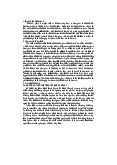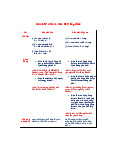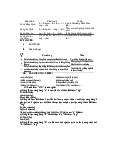
Preview text:
Name: Nguyễn Thế Anh Student : 2214710012 ID
SUMMARY: Phil Primack: Doesn’t Anyone Get a C Anymore?
In his op-ed, Phil Primack discusses the issue of grade inflation in universities. He
recalls an experience where he initially considered giving a student a lower grade but
ultimately gave a higher grade due to numerous factors, including fear of complaints. Primack
highlights the prevalence of grade inflation, which has led students to perceive a B as a low
grade and a C as a disaster. The author argues that grade inflation poses a significant problem
as it prevents professors from distinguishing exceptional work from average work and
conceals student laziness. Many professors fear that implementing stricter grading standards
could result in negative student evaluations, which might impact their academic careers. This
fear has led some professors to lower their expectations and increase grades to maintain
positive impressions and attract students to their classes. The op-ed cites Harvard University
as an example of a prestigious institution with a history of grade inflation. While some
officials have expressed concerns about grade creep, the percentage of A-range grades at
Harvard has risen significantly over the years. The University of Massachusetts at Amherst is
also mentioned, with the average GPA increasing over a decade, attributed to better-prepared
students rather than grade inflation. Primack suggests that smarter students naturally getting
higher grades may not fully explain grade inflation. He argues that colleges are reluctant to
challenge students and their tuition-paying parents, leading to a lack of institutional support
for addressing the issue. Exceptions like Princeton University, which implemented policies to
limit the percentage of A grades, and Wellesley College, which aims to maintain an average
grade no higher than a B-plus, are highlighted as examples of efforts to combat grade
inflation. To conclude, the author emphasizes the importance of university officials taking
consistent action and leadership to prevent grade inflation. He compares the situation to the
act of denying a problem while privately recognizing concerns and urges universities to
openly address the issue rather than continuing to deny the existence of grade inflation publicly.




